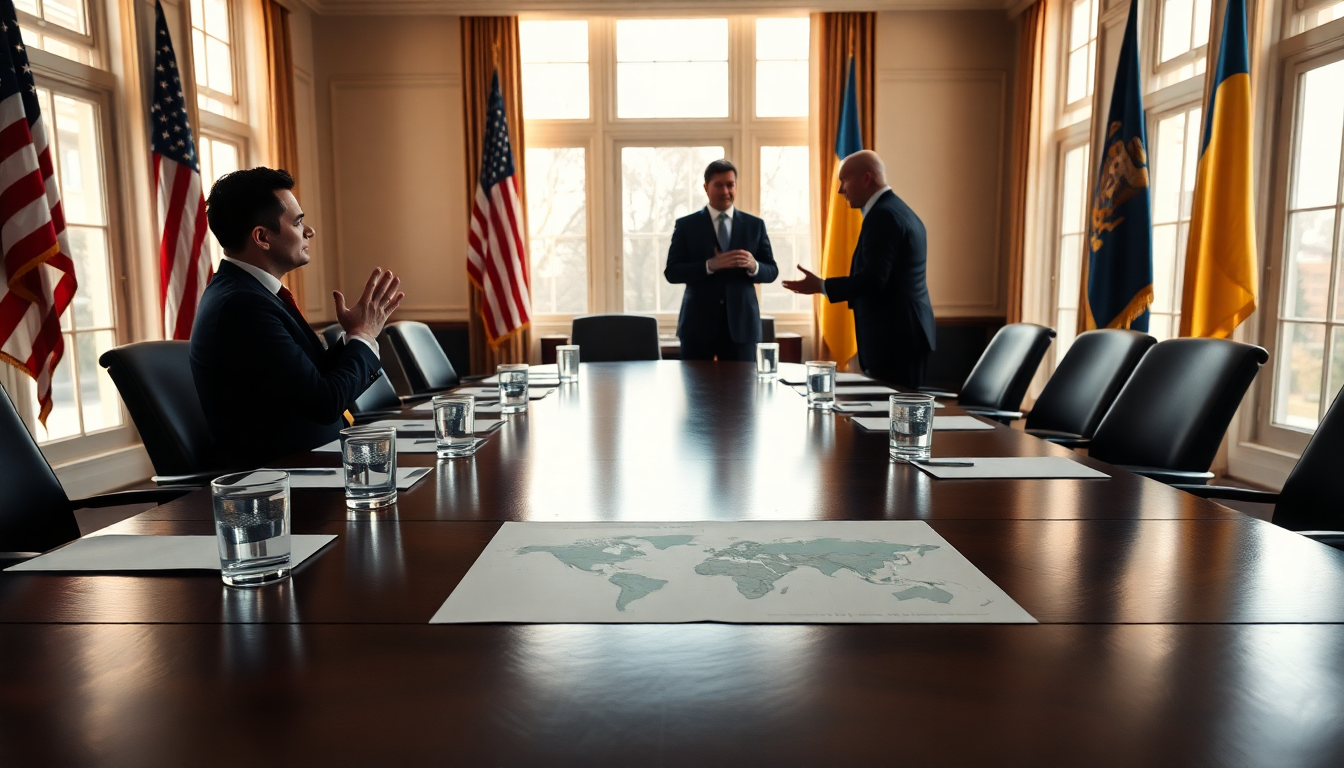Table of Contents
In a crucial moment for Ukraine, President Volodymyr Zelenskyy has touched down in Washington, D.C., gearing up for a significant meeting with President Donald Trump. This visit is timely, especially with the pressing need to find a resolution to the ongoing war with Russia dominating international discussions.
Zelenskyy didn’t hesitate to express his gratitude to the U.S. President for the invitation, highlighting their shared commitment to achieving a swift and sustainable peace. As European leaders join the conversation, the stakes for Ukraine and its allies have never been higher.
The Importance of the Meeting
Zelenskyy’s visit is more than just a diplomatic gesture; it marks a pivotal shift in the negotiation dynamics that have defined this conflict. His presence in Washington serves as a bold statement of intent, aiming to redefine how peace talks are approached.
In the past, Ukraine faced significant hurdles that allowed Russia to annex Crimea and parts of Donbas, creating a precarious security landscape in Eastern Europe. Isn’t it time for a change?
During his time in Washington, Zelenskyy is expected to unite with European leaders, presenting a solid front that prioritizes enforceable security guarantees.
These guarantees are crucial to preventing further aggression from Moscow and ensuring that Ukraine’s sovereignty is respected. Previous agreements, labeled as “security guarantees,” have fallen short, underscoring the need for a fresh approach that is both pragmatic and resolute.
Importantly, Zelenskyy’s insistence on steering clear of temporary truces is vital. He’s made it clear that any future agreements must go beyond mere pauses in hostilities; they need to pave the way for lasting solutions that deter future conflicts. His remarks highlight a broader understanding: discussions without firm commitments do little to secure peace.
So, what does a real peace plan look like?
Recent Military Developments and Strategic Insights
As the situation on the ground evolves, Zelenskyy has pointed to the successes of Ukrainian forces in regions like Donetsk and Sumy. These victories are more than tactical wins; they serve as a morale booster for the Ukrainian people and a signal to international partners that Ukraine is fully capable of defending its territory. The resilience and determination of the Ukrainian military play a pivotal role as they actively work to reclaim lost ground.
Despite ongoing challenges, support from the United States and European allies remains a cornerstone of Ukraine’s defense strategy. Zelenskyy has openly expressed gratitude for the backing received, recognizing that the combined strength of Ukraine, the U.S., and its European partners is crucial in urging Russia to reconsider its aggressive stance. This optimism reflects a broader trend of increasing military collaboration and strategic alignment among Western nations. Isn’t it inspiring to see unity in the face of adversity?
Moreover, the upcoming meeting with Trump is expected to reinforce the idea that Ukraine’s territorial integrity is not just a national issue but a regional security concern that affects the stability of Europe as a whole. The implications of this dialogue extend beyond immediate military strategies; they resonate with geopolitical dynamics that could reshape future alliances and cooperative defense strategies in the region.
Looking Ahead: The Path to Sustainable Peace
As these discussions unfold, the spotlight will undoubtedly be on how to convert military successes into diplomatic victories. Zelenskyy’s leadership is marked by a pragmatic approach, seeking to balance military readiness with diplomatic engagement. The ultimate aim? To secure a lasting peace underpinned by robust security arrangements that deter future threats from Russia.
The collaborative efforts of Zelenskyy and European leaders signal a commitment to a comprehensive strategy that prioritizes not just an end to hostilities but also the establishment of a framework ensuring Ukraine’s future security. This framework must draw from the lessons learned in previous negotiations and incorporate measures that hold aggressors accountable, fostering an environment conducive to peace. Could this be the turning point we’ve been waiting for?
In conclusion, the meeting between President Zelenskyy and President Trump represents a critical juncture in the ongoing conflict with Russia. The outcomes of these discussions, combined with support from European allies, could pave the way for a more stable and secure Ukraine, reinforcing the principle that sovereignty and territorial integrity are non-negotiable rights. The world is watching closely as these leaders chart a course toward peace. What will this new chapter hold for Ukraine and its allies?





